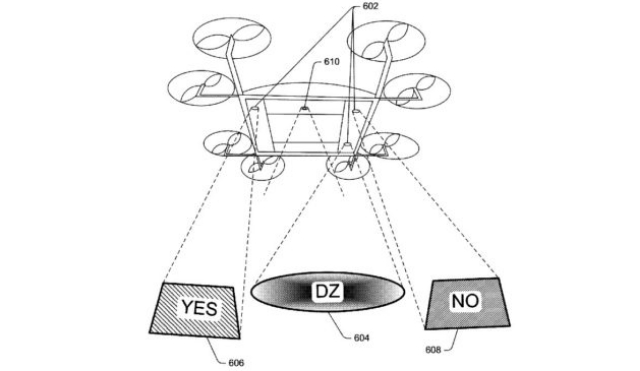A patent just issued to Amazon addresses methods by which a drone could signal its approach, as well as techniques for signalling back.
The application was filed by a group of Seattle-area inventors on Amazon’s behalf almost two years ago.
There’s no indication that two-way messaging systems have been built into the drones that Amazon is currently testing, but there’s lots of leeway for experimentation.
People pretty much know how to interact with a courier who’s making a delivery in the flesh, but interacting with an unmanned aerial vehicle could take some getting used to.
“A property owner may be alarmed or confused when a UAV approaches the property,” the inventors say.
The newly issued patent covers a broad spectrum of possibilities:
- The drone and its control center could send status reports as texts to customers, or even show the drone’s approach on an online map. That’s what Amazon does with its Prime Now delivery service.
- Lights and speakers could be installed onto the drone to provide signals to customers. “The UAV may ‘announce’ its arrival via the lights and/or via audio, such as by emitting a warning sound, a pleasant tune, or other audio,” the inventors say.
- A projector on the drone could shine a spotlight onto its intended drop zone, or flash a message or graphics to communicate with the package’s recipient.
- The drone might even execute a series of maneuvers to signal what it intends to do, like a figure-8 over its intended drop zone.
- An onboard pointer or other hardware could indicate that an obstacle has to be moved, or that a dog has to be put inside, in order for the delivery to be made.
- Customers at the drop zone could use predetermined hand signals or other sorts of gestures to identify themselves to a camera-equipped drone and tell the robot how to proceed.
One scenario, for example, calls for the drone to announce a question, such as “Is this landing spot clear?” Then it could flash two squares of light onto the ground, labelled “Yes” and “No.” Customers would answer the question by walking over to the appropriate spot.
Source: GeekWire

